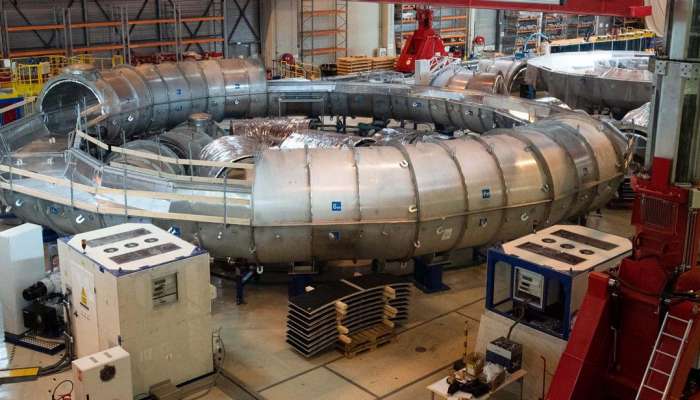
The US Department of Energy will announce a major breakthrough in nuclear fusion technology this week, department spokespeople said Sunday. The milestone announcement is expected from Washington on Tuesday.
The announcement was made shortly after the Financial Times reported scientists at the California-based Lawrence Livermore National Laboratory (LLNL) successfully generated a "net energy gain" using nuclear fusion in a lab for the first time.
For decades, scientists have pumped more energy into experimental fusion reactors than the total new energy created in the process. This setback has made nuclear fission — not fusion — the default preference in the pursuit of limitless, zero-carbon power, despite its health and safety risks.
Here's what you need to know about nuclear fusion.
The 'future of energy'
If you work in atomic energy, you've probably heard the joke: Generating electricity from nuclear fusion is always just 30 years away. But despite its complexity, scientists working on the technology say it's worth the trouble.
That's because the nuclear fusion reaction has a higher energy potential than all other energy sources we know. It can release nearly 4 million times more energy than chemical reactions like burning coal, oil or gas, and four times more than nuclear fission, the process currently used in all nuclear power plants around the world.
Discovered in the early 20th century, fusion is seen as the future of energy by many policymakers, especially in Europe.
'Like burning firewood'
But is nuclear fusion really a "greener" alternative to what we're doing now, and how far have we come in generating electricity from this process?
To look into this, DW visited the International Thermonuclear Experimental Reactor (ITER), a large collaborative project between nuclear fusion experts from 35 nations.
Located a couple of hours from the scenic coast of southern France, ITER stands out along the idyllic landscape surrounding it. The project's compound is laden with metal sheds, workshops and equipment. Busy scientists and technicians roam the reactor's campus in hard hats, rubber boots and neon vests.
Sitting at the center of this industrial landscape, Pietro Barabaschi, the Director General of ITER, promises that the future of fusion energy is bright.
"First, you start a flame, heat the wood and at some point a chemical reaction starts, and then this reaction is enough to burn the rest of the wood."
Getting energy from nuclear fusion
Atoms are composed of a nucleus (containing protons and neutrons) and electrons. In fusion, two atoms are merged into one by smashing their nuclei.
In a bid to achieve a stable nucleus, the newly formed atom sometimes chucks out a high-energy neutron previously used to bind the neutron to the nucleus.
Nuclear fusion scientists want to convert this excess energy into electricity that lights up our homes.
Technically we already harness commercially viable energy from fast-flung neutrons in nuclear fission power plants. So why don't we just stick to it?
Fusion versus fission
In fission, instead of fusing two light atoms, a heavy atom is split into two or more.
All nuclear power plants in the world use fission reactors to generate electricity. France, where ITER is located, gets 70% of its energy from nuclear fission. However, it is not a popular source of fuel in most countries due to public fears of harmful radiation, stoked by accidents such as the Chernobyl disaster, the meltdown at Fukushima and the US Three Mile Island partial meltdown.
The main difference between nuclear fission and fusion is the radioactivity of the fuel each method creates, says ITER knowledge officer Akko Maas. He has been with the project since its early days.
"In fission, the uranium that you use and the plutonium that you create are both radioactive. And once you have gotten the energy out of them, you are still left with radioactive material."
Of the two base materials considered most efficient for fusion energy, deuterium is not radioactive, but tritium is. However, its radiation is comparatively weak and short-lived.
"If you choose the materials correctly, even on an industrial scale, you can limit the radioactivity from fusion to 100 to 200 years, which is far more manageable than if you talk about the 40,000 years we see in fission," Maas says.
The 'green' advantage
In addition to being highly efficient, proponents say nuclear energy could dramatically reduce our dependence on fossil fuels. Nuclear energy itself is considered a carbon-free alternative to fossil fuels because its creation does not emit greenhouse gasses — its major byproduct is helium, an inert, non-toxic gas.
Further, deuterium is abundant in seawater, and scientists are trying to produce tritium using lithium in situ.
Renewable energy sources like wind and solar alone cannot meet global baseline energy needs. Nuclear fusion, if successful, could provide well above that.
While all of this sounds rosy, it is still a distant dream. For fusion to become a reality, we need a technological breakthrough in plasma physics.